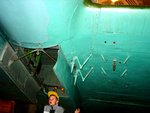wuzak
Captain
A companion thread to Tomo's fighter thread.
Which 3 bombers were the best available (in production and service/combat) for the Allies in 1941.
They could be light, medium, heavy, strategic, tactical, torpedo or dive bomber. Or any other category of bomber I have missed.
Which 3 bombers were the best available (in production and service/combat) for the Allies in 1941.
They could be light, medium, heavy, strategic, tactical, torpedo or dive bomber. Or any other category of bomber I have missed.

